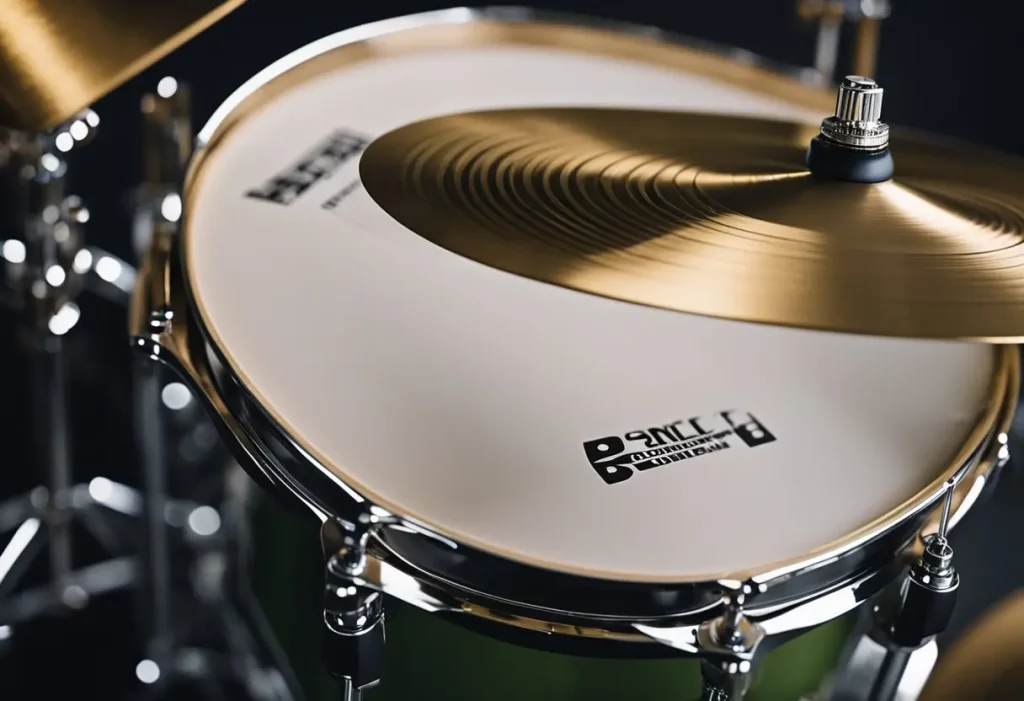When you think of drums, you might envision the dynamic beats and rhythms that drive a song.
But, do drums have notes? Do they contribute to the melodic aspects of music?
Drum notes allow drummers to communicate and transcribe their beats onto paper, ensuring consistency and accuracy for performance and learning purposes. Each drum sound is represented by a specific symbol or note on the staff, allowing musicians to interpret and reproduce the intended drumming sequence.

Content
The Science of Drum Notes
While drums may not produce the same type of notes as other musical instruments, they do have elements of tonality.
Drum notation is used to represent various drum sounds and rhythms in sheet music, indicating their timing and intensity.
Drum pitch refers to the perceived highness or lowness of the drum sounds, and drum tonality refers to the overall quality and characteristics of the drum’s sound.
Drum notation plays a fundamental role in capturing the complex rhythms and patterns produced by drums.
“Drum notation enables drummers to share their musical ideas and collaborate with other musicians effectively. It provides a universal language for drummers to notate and communicate their beats, making it easier for everyone involved in the music-making process.” -Derek Smith, professional drummer
Drum pitch refers to the perceived high or low frequencies of drum sounds. Although drums do not have a fixed pitch like melodious instruments, such as piano or violin, they have a relative pitch.
By using different drum sizes, tensions, and mutes, drummers can alter the pitch of their drum sounds to create a desired musical effect. For example, larger drums tend to produce lower pitches, while smaller drums yield higher pitches.
Drum tonality encompasses the overall quality, character, and timbre of the drum’s sound. It includes factors such as resonance, decay, and harmonic content.
Each drum type, such as snare drums, bass drums, and cymbals, has its unique tonal characteristics, allowing drummers to create diverse sounds and textures within a musical composition.
The interplay between drum notation, drum pitch, and drum tonality contributes to the intricate art of drumming.
It requires a deep understanding of rhythm, dynamics, and musicality to create expressive drum performances that enhance the overall musical experience.
Types of Drums and Their Tonality
| Drum Type | Tonality |
|---|---|
| Bass Drum | Deep, booming |
| Snare Drum | Bright, crisp |
| Tom-Tom | Variable depending on size |
| Cymbals | Bright, shimmering |
The table above showcases the tonal characteristics of different drum types commonly used in music.
Each drum brings a unique tonal quality, allowing drummers to create a diverse range of sounds and timbres within their compositions.
Understanding Drum Music Theory
Drum music theory encompasses the fundamental principles of rhythm, timing, and musicality in drumming. While drums may not produce distinct melodic notes like other instruments, they play a vital role in contributing rhythmically to the overall musical composition.
Drummers utilize various techniques and patterns to create musical phrases, adding dynamic elements to the music.
Understanding drum music theory enables drummers to navigate complex rhythmic patterns, execute precise timing, and enhance their overall performance. It involves studying rhythmic subdivisions, understanding time signatures, and developing a keen sense of groove.
Drummers must also be well-versed in dynamics, utilizing techniques such as accents and ghost notes to add depth and texture to their playing.
Although drums lack traditional melodic notes, they possess a unique melodic quality through the integration of drum melodies.
Drum melodies refer to the deliberate selection and arrangement of drum sounds and rhythms to create melodic-like patterns and motifs.
These drum melodies can add a layer of musicality to the composition, emphasizing certain musical themes or creating contrasting rhythms to engage the listener.
By incorporating drum melodies into their playing, drummers can elevate the musical experience and captivate audiences with intricate and rhythmically captivating performances.
Drum music theory also involves exploring different drumming styles and genres, as each has its own set of rhythmic patterns and techniques. By studying various drumming traditions, drummers can expand their musical vocabulary and develop a diverse range of playing styles.
This allows them to adapt to different musical contexts and collaborate effectively with other musicians.
Advancing Your Drum Music Theory Skills
To deepen your understanding of drum music theory, consider incorporating the following practices into your drumming journey:
- Study rhythmic notation and drum sheet music to develop your reading skills and familiarize yourself with common drum notation symbols.
- Experiment with different rhythmic subdivisions and time signatures to expand your rhythmic vocabulary and improve your sense of timing.
- Listen attentively to a wide range of musical genres, paying close attention to the drumming patterns and the interaction between drums and other instruments.
- Practice playing along with recorded music to develop your ability to groove and synchronize with different musical styles.
- Collaborate with other musicians to explore different musical contexts and learn how to adapt your drumming style to complement other instruments.
By immersing yourself in drum music theory and diligently practicing these techniques, you can elevate your drumming skills and unlock new creative possibilities in your musical journey.
Drum Music Theory Concepts
| Concept | Description |
|---|---|
| Rhythmic Subdivisions | The division of beats into smaller rhythmic values, such as eighth notes, sixteenth notes, and triplets. |
| Time Signatures | The variation of loudness and softness in drumming, is achieved through techniques such as accents, ghost notes, and controlled strokes. |
| Groove | The feel and flow of a rhythmic pattern. It refers to the collective interaction between drum elements, emphasizing syncopation, accents, and overall musicality. |
| Dynamics | The intentional arrangement of drum sounds and rhythms to create melodic patterns and motifs, adds musicality and depth to drum compositions. |
| Drum Melodies | The intentional arrangement of drum sounds and rhythms to create melodic patterns and motifs, adding musicality and depth to drum compositions. |
Exploring Drum Rhythms and Beats

Drums are renowned for their ability to create captivating and infectious rhythms and beats.
Drummers utilize a myriad of drumming techniques and patterns to generate a wide range of rhythmic variations, adding depth and complexity to their performances.
These rhythmic elements form the foundation of any musical composition and play a vital role in setting the pace, energy, and overall groove of the song.
The beauty of drum rhythms lies in their diversity and versatility. Different styles of drumming, such as rock, jazz, Latin, or African, all have their unique rhythmic qualities that distinguish them.
From syncopated patterns to intricate fills, drummers employ their creativity to craft captivating rhythms and bring life to the music.
Drum beats, on the other hand, refer to the specific combinations of drum sounds and patterns that create a cohesive musical framework.
Drummers layer these patterns and beats together, carefully selecting the appropriate cymbals, snare, and bass drum sounds to create a dynamic and engaging drum composition.
The art of crafting drum beats requires a keen sense of timing, coordination, and an understanding of how individual drum sounds interact with each other.
Types of Drum Rhythms
Drum rhythms can take various forms, depending on the musical genre or style. Here are a few examples:
- Bass-Driven Rhythms: In genres like funk and hip-hop, the emphasis is often on the bass drum, which establishes a strong and steady foundation for the music.
- Syncopated Rhythms: Jazz and Latin music often incorporate syncopated rhythms, which involve accents on off-beats, creating a complex and compelling groove.
- Polyrhythms: African and Afro-Cuban music are known for their intricate polyrhythmic patterns, where multiple rhythmic cycles overlap and intersect.
- Shuffle Rhythms: Blues and rock music frequently feature shuffle rhythms, characterized by a triplet-based feel that adds a distinctive swing and shuffle to the beat.
These are just a few examples of the endless possibilities and variations that drum rhythms can offer. Drummers continue to push the boundaries of rhythm, exploring new sounds and patterns to create innovative and exciting music.
Conclusion
While drums may not produce distinct musical notes in the traditional sense, they play a crucial role in creating rhythm and enhancing musical compositions.
Drums contribute rhythmically to the overall musical composition, adding texture and serving as the backbone of a song.
Through various techniques and patterns, drummers create musical phrases and add dynamic elements to the music.
